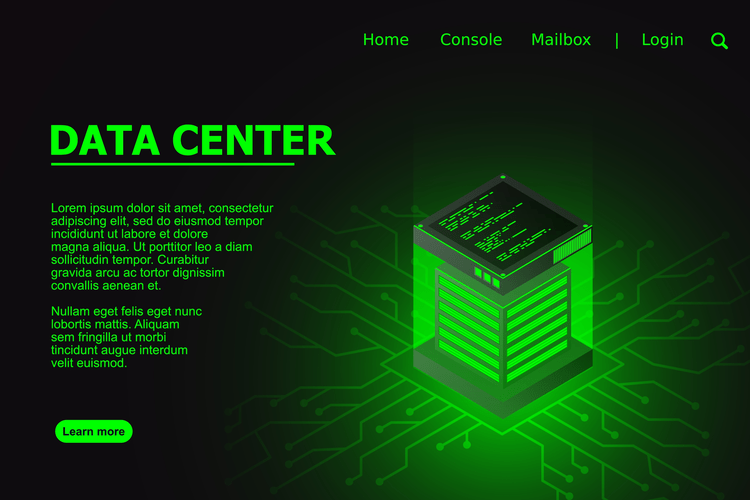The Real Distinction Between Continuous Integration And Steady Deployment
Kubernetes is an orchestration platform for containerized purposes, whereas CI/CD tools automate the processes of steady integration, supply, and deployment in software development pipelines. Continuous integration (CI) is a growth strategy of routinely building and performing unit tests upon making adjustments to the supply code. CI requires improvement groups to combine code adjustments into a shared supply code repository multiple times every day.
- Continuous deployment is much like continuous delivery with the exception that releases occur automatically.
- And steady deployment is like steady supply, except that releases happen mechanically.
- Frequent utility upgrades mean a shorter feedback loop with customers.
- It denotes iterative and incremental methods such as Scrum, Kanban, Scaled Agile Framework (SAFe), Lean Development, and Extreme Programming (XP).
For both these practices, it is important to have the proper CI/CD instruments in place. The major issue right here is the only “integration” phase that occurs at every product launch. This is the pain level of the workflow and it prevents the group from having stress-free releases. Finally, testing is completed, and Elizabeth happily announces that the release is prepared to be packaged and shipped to clients. An intensive, extremely focused residency with Red Hat experts where you be taught to use an agile methodology and open source instruments to work in your enterprise’s enterprise problems.
The Google Cloud Devops Awards: Apply Now!
The quest to decipher the connection between the CI/CD pipeline and DevOps usually sparks discussions throughout different boards and platforms. To reply all CI vs. CD debates, both are a necessity for DevOps best practices. Under Continuous Integration, groups don’t want to worry about packaging huge commits and releasing profound structural adjustments. Instead, they can interact in smaller, iterative modifications that are less prone to be disruptive. I’ve been within the software enterprise for 10 years now in various roles from development to product management.
Continuous delivery and/or deployment (CD) is a 2 part course of that refers back to the integration, testing, and supply of code adjustments. Continuous delivery stops short of automatic production deployment, whereas continuous deployment routinely releases the updates into the manufacturing setting. DevOps, quick for development and operations, is a collaborative methodology meant to interrupt down the barrier between development and operations groups in a company. But if you have already got an present utility with prospects you want to gradual issues down and begin with continuous integration and continuous supply.
Continuous Deployment: For Advanced Progressive Delivery Methods
Continuous integration is a software improvement method the place members of the staff can integrate their work a minimum of as quickly as a day. In this method, each integration is checked by an automatic construct to go looking the error. BrowserStack provides a quantity of instruments which would possibly be important to constructing a CI/CD and DevOps-empowered testing pipeline. Firstly, it supplies access to a real device cloud internet hosting 3000+ real browsers and units for testing. Secondly, it offers a sturdy cloud Selenium grid with 99% uptime, enabling check automation on actual browsers and devices.

Putting definitions aside, the focus of CI is transferring improvement work from a silo to the broader development group. By contrast, CD is concentrated on transferring growth work to the end person. In combination, they create a CI/CD pipeline — a extremely automated workflow that keeps work moving shortly through each stage of your release course of. However, ‘CD’ can also be outlined as ‘continuous delivery’, which is focused on delivering worth to finish customers. This embodies the principles of DevOps, by encouraging an efficient release process that is still dependable and profitable. Overall, DevOps was created to remove lots of the headaches that may come with innovation.
Continuous integration (CI) and continuous delivery (CD) are subsets within the larger DevOps umbrella—put merely, these are the two core processes that enable the DevOps methodology. As two sides of the identical coin, they work collectively to remove the complexity of ongoing innovation. We construct unstoppable groups by equipping DevOps professionals with the platform, tools and coaching they should make release days obsolete. It is crucial because it enables greater transparency and foresight within the software program improvement and supply process. You deploy the hottest and production prepared version of your code to some environment.
What’s Continuous Delivery (cd)
By doing so, you avoid integration challenges that can happen when waiting for launch day to merge changes into the release department. CI is an strategy to automatically testing every codebase change, whereas Continuous Delivery is an approach to obtain modifications of recent options, configuration, and bug fixes. On the opposite hand, a Continuous Deployment is an approach to growing software program in a short cycle.
Even though continuous delivery describes an purpose somewhat than a improvement process, it does encourage a certain kind of workflow. Automating the promotion of work along your release pipeline is an effective way to accelerate the move of work and pace of delivery to end customers. This could involve steady deployment, which may get your work stay even faster. Continuous supply (CD) is an extension of continuous integration.
Deployments were happening very sometimes (there are companies that deploy once each six months to this day). In extreme instances, deployments had been taking place ONCE (the waterfall design approach). Therefore, if you want to relieve the burden in your DevOps staff from worrying about extraneous issues like integration and deployment steps, then strongly consider CI/CD since they have automated these processes. Daily integration is critical to ensure all builders are on the identical level, working on an analogous mainline copy. This can’t be attainable if a developer withholds their code for too lengthy, say, for greater than a day. To stop other builders from assuming false premises and coding features underneath outdated assumptions, CI adds a burden to everybody on the development staff to deploy code each single day.
In a big project with many developers, commits are made many occasions throughout a day. If the Deployment is a hit, the code is pushed to manufacturing. This commit, build, take a look at, and deploy is a continuous process, and hence the name steady integration/deployment. Because CI/CD automates the manual human intervention traditionally needed to get new code from a commit into manufacturing, downtime is minimized and code releases occur sooner. And with the power to more rapidly combine updates and adjustments to code, person feedback may be included extra incessantly and effectively, meaning constructive outcomes for customers and more satisfied prospects general. CI/CD, which stands for steady integration and steady delivery/deployment, goals to streamline and speed up the software improvement lifecycle.

These processes empower developers to build quality software and functions on an ongoing basis via automated improvement, testing, supply and deployment, which ensures higher collaboration and larger effectivity. CI and CD are two acronyms regularly used in trendy development practices and DevOps. CI stands for continuous integration, a elementary DevOps best practice the place developers regularly merge code changes right into a central repository where automated builds and tests run. But CD can either mean steady supply or steady deployment. If you are just getting began on a new project with no customers yet, it might be straightforward so that you can deploy each decide to manufacturing. You may even start by automating your deployments and releasing your alpha model to production with no customers.
Continuous Testing in DevOps helps discover important bugs within the initial levels itself to keep away from wasting the value of bug fixing in later phases. Make positive that you simply strategy each improvement paradigm within the right order. Targeting Continuous Delivery is a method more realistic goal and one where https://www.globalcloudteam.com/ tooling options are abundant. If we alleviate the ache of the “integration” part by doing it more often, we will also do the identical thing for the “delivery” section. If you need to take full advantage of the agility and responsiveness of DevOps, IT security should play a job in the full life cycle of your apps.
Steady Deployment Or Continuous Delivery?
Continuous Delivery is usually enough to be productive, particularly if you are working in a detailed network and have limited environments you possibly can deploy to. It can be that the release cycle of your software prevents unplanned deploys. You would have proof read your code yet one more time or reviewed a PR while ready.
To work the history of CD into the image would require dialogue of how software testing and supply practices have modified over time, not just an overview of the historical past of CI software program over the past a quantity of years. The CI/CD pipeline is a half of the broader DevOps/DevSecOps framework. In order to successfully implement and run a CI/CD pipeline, organizations want tools to forestall points of friction that decelerate integration and supply. Teams require an built-in toolchain of technologies to facilitate collaborative and unimpeded growth efforts. Continuous delivery (CD) is the automated supply of completed code to environments like testing and improvement. CD offers an automated and constant method for code to be delivered to those environments.
Today, safety tools should fit seamlessly into the developer workflow and the CI/CD pipeline so as to maintain tempo with DevOps and not slow growth velocity. Continuous integration (CI) is apply that includes developers making small adjustments and checks to their code. Due to the size of necessities and the variety of steps concerned, this process is automated to make certain that teams can build, test, and package deal their applications in a reliable and repeatable way. CI helps streamline code modifications, thereby growing time for builders to make modifications and contribute to improved software program. DevOps and the acronyms CI and CD stand out as pillars supporting the continuous innovation engine. Continuous integration, or CI, includes the merging of code changes, constructing collaboration and productivity via automated builds and checks.
Since integration has often been a time and effort-consuming exercise, CI ways depend on automation instruments that execute construct and testing. This development method builds upon Continuous Delivery and basically utterly removes all human intervention. Any launch candidate that is found to be ready (and passes all quality and testing gates) is immediately pushed to production. After each feature is merged to the mainline branch, the appliance just isn’t solely examined for correctness, however it is also packaged and deployed right into a testing setting (that ideally matches production).
While it is a coding philosophy, a set of practices also underpins the Continuous Integration pipeline to make it feasible. Although testing, particularly automated testing, is linked with CI, it isn’t a requirement. Your CI and CD processes are additionally interdependent, particularly for Salesforce growth. Though work may have passed your automated integration testing, you will also want to ensure it’s buildable in Salesforce and validates successfully ci/cd pipeline monitoring earlier than you’ll be able to deploy to manufacturing. This is why it’s important to view CI and CD together as a holistic growth process, with each component supporting the opposite and your overarching targets with DevOps. An example of DevOps would be shortly and effectively deploying code on a cloud platform.




